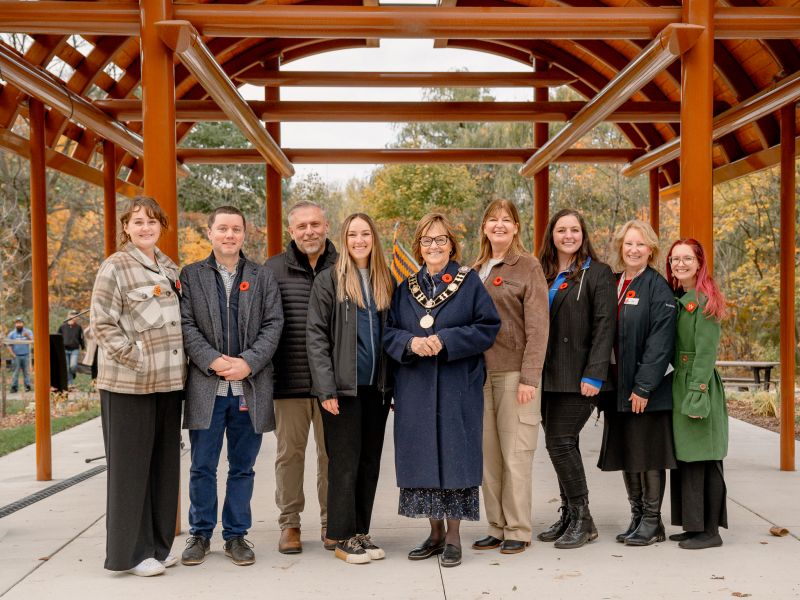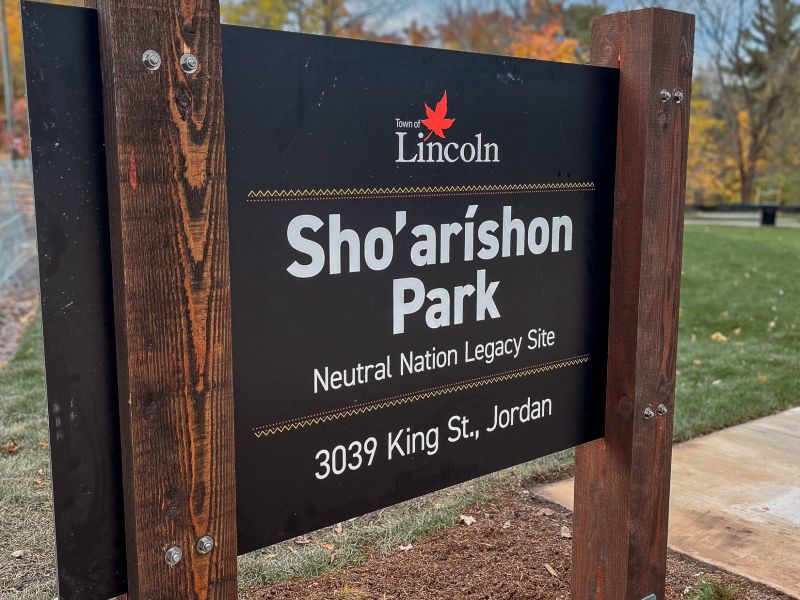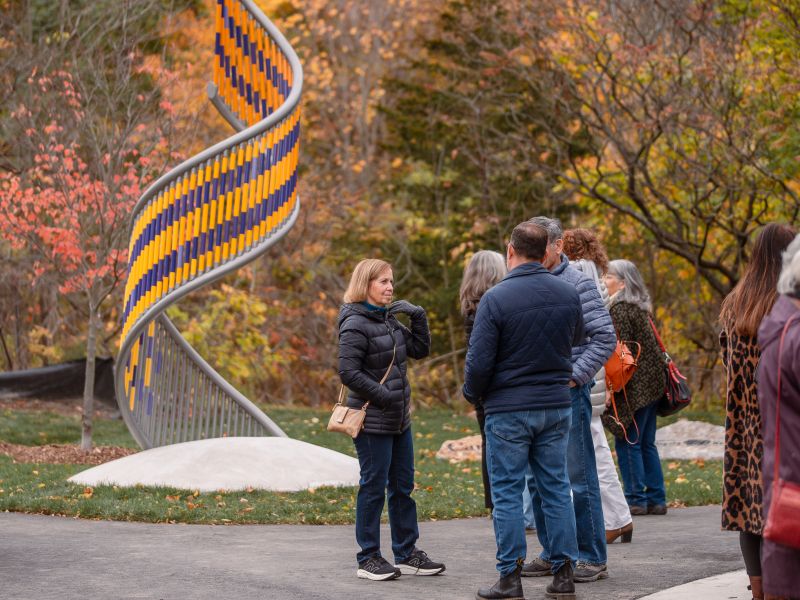Latest Park Updates
Park Opening - November 1, 2025

The Town of Lincoln is proud to celebrate the opening of Sho’aríshon Park, a Neutral Nation Legacy Site in Jordan.
Created in collaboration with Indigenous partners, the park honours the history, culture, and enduring presence of Indigenous peoples — with a special focus on the Neutral Nation, the first known inhabitants of the land now called Lincoln.
Sho’aríshon Park is a space for truth, learning, ceremony, and connection — a meaningful step forward on our shared path toward reconciliation.
Sho’aríshon Park, 3039 King St, Jordan, ON
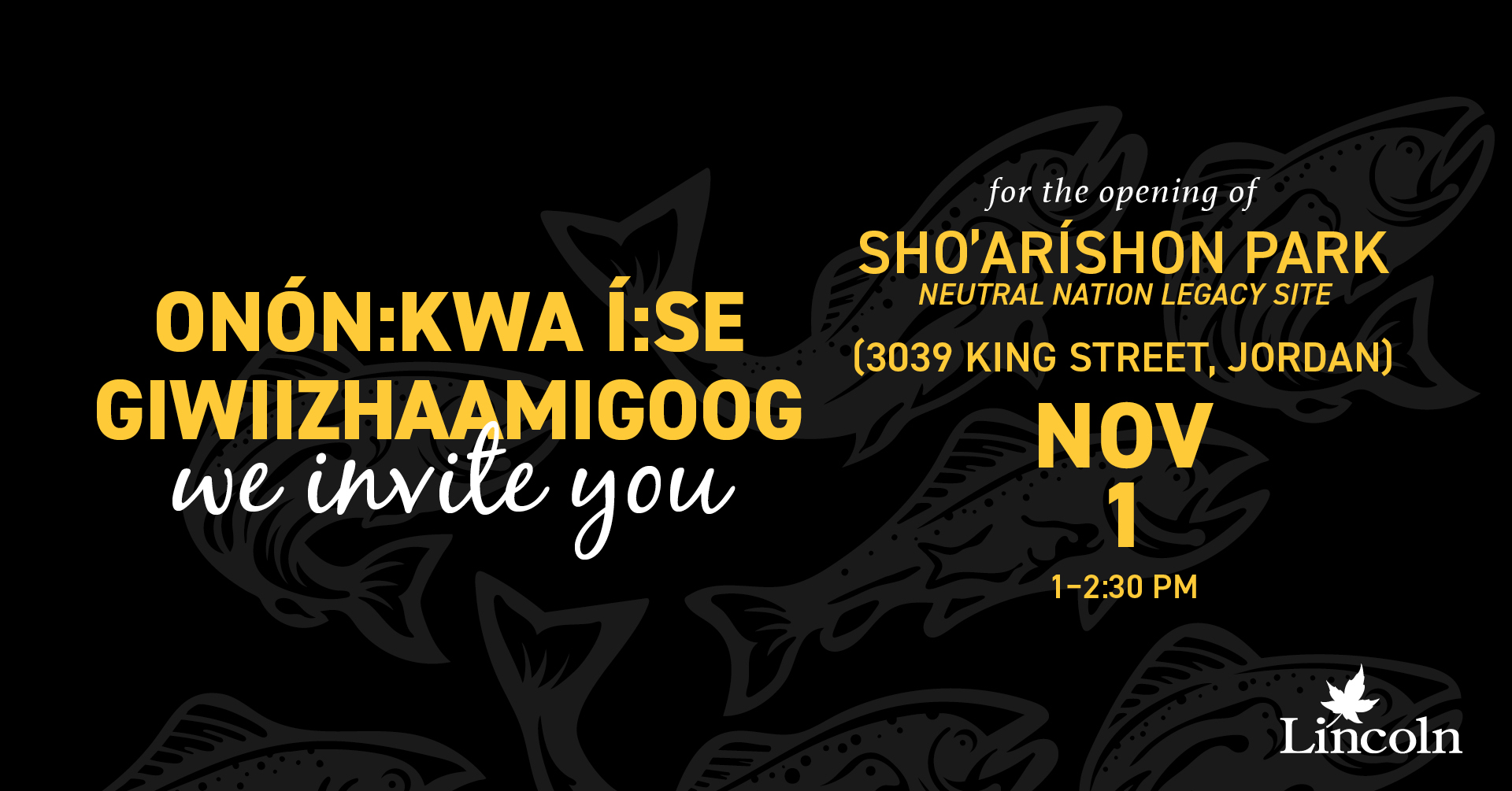
You're Invited to the Opening of Sho'aríshon Park!
The Town of Lincoln is honoured to invite the community to the official opening of Sho’aríshon Park: Neutral Nation Legacy Site.
Date: Saturday, November 1, 2025
Location: Sho’aríshon Park (Neutral Nation Legacy Site)
Time: Ceremony begins at 1:00 p.m.
Parking/Shuttle: A complimentary shuttle will run from the Jordan Municipal Parking Lot (3763 Nineteenth St, Jordan Station, ON L0R 1S0) starting at 12:00 p.m.
Sho’aríshon Park was designed in collaboration with Indigenous partners to honour and reflect the history, culture, and enduring presence of Indigenous peoples, with a particular focus on the Neutral Nation.
This important new public space in the Town of Lincoln features naturalized landscapes, interpretive installations, and public art that provide a place for reflection, education, and gathering.
Join us as we celebrate the opening of Sho’aríshon Park and come together to honour the stories, heritage, and relationships that continue to shape our shared community!
Construction Underway!
Construction started June 2025 and is anticipated to be complete in October 2025. The development will include the following:
- Interpretive storytelling signage and public art (Two Row Helix by David Beyer and Lilly Otasevic, Water Scroll by Kathryn Corbiere and Sophie-Ann Edwards)
- A native species rain garden with educational signage
- Rest and comfort areas including permanent shade and table seating
- Elements to support active transportation including pathways, enhanced trail connections, bicycle parking and repair station
- Architectural features including a palisade and longhouse
- Water connection for anticipated seasonal water bottle refill station
- Trees and plantings
- Garbage and recycling receptacles, as well as convenience power (hydro)
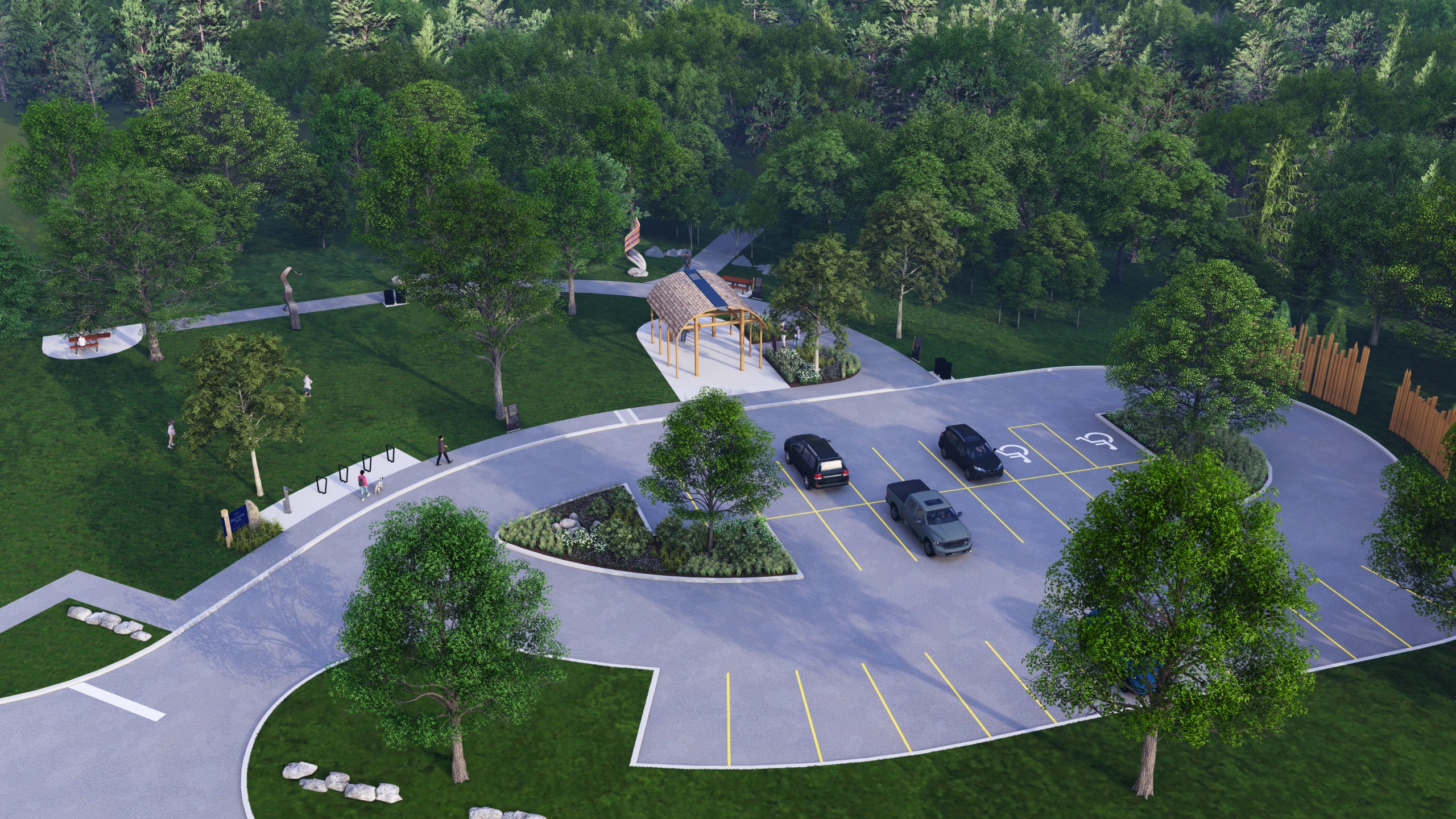

Sho’aríshon (So-ah-ree-son) Park is located at 3039 King St, Jordan, in Ward 3. The park currently features a gravel parking lot and 1.19 acres of greenspace. It is used as a passive space and as a trail access point to the Twenty Valley Trail and Bruce Trail. This site has an important and rich cultural history related to Indigenous inhabitation of the land, and in particular to an Iroquoian-speaking confederation of tribes known as the Neutral Nation who lived in the vicinity around 1600.
In partnership with a group of Indigenous advisors and environmental stakeholders as well as design consultants, the Town is leading the development of a park enhancement plan for the site which is currently in the detailed design stage.
Existing Conditions

Sho’aríshon (So-ah-ree-son) Park will undergo redevelopment with the goals of:
- Creating a welcoming and inclusive space;
- Acknowledging and celebrating Indigenous connections to the land, in particular that of the Neutral Nation;
- Supporting ecological health; and
- Becoming a distinct feature within the Town of Lincoln’s ‘Cultural Corridor'.
The Town is committed to Reconciliation and renewed relationships with Indigenous peoples based on the recognition of rights, respect, cooperation and partnership. Developing this this park so that it recognizes the history and culture of Indigenous peoples, as well as their connection to the land, is part of the Town of Lincoln's strategy to increase inclusion and access for all residents and contribute to the process of Reconciliation.
Funding for the Park was approved by Town of Lincoln Council in December 2019. Since 2020, Town of Lincoln Staff and project partners have submitted funding applications to regional, provincial, and national agencies to increase the project budget.
The Town of Lincoln has secured funding for this project from a number of sources including the Government of Canada, Niagara Region, Greenbelt Foundation, and Niagara Community Foundation. External funding represents 84% of the total project budget.
Construction began on the Niagara Region's Twenty Mile Creek Arch Bridge Replacement Project in January of 2025 and is expected to be completed by the end of 2026. Construction includes widening both sides of the existing roadway, adding a multi-use trail on the north side of the bridge and improving the pathway under the bridge. Please note that the traffic over the bridge will be reduced to one lane for the duration of construction. Traffic will be controlled by signals, but delays are expected. Detours will be posted in advance for any full road closures that are needed during the project. Pedestrian access cannot be maintained during construction.
Regional Staff presented a project update to the Town of Lincoln Council at the February 10th, 2025 Committee of the Whole meeting.
In partnership with the Town of Lincoln, the Niagara Peninsula Conservation Authority and the Bruce Trail Conservancy, Ontario Heritage Trust will be improving and expanding the Twenty Valley Trail that connects Sho’aríshon (So-ah-ree-son) Park to the Lincoln Museum and Cultural Centre, Ball's Fall's, the Ellis Property and the Bruce Trail. Construction began November 2024 and will be completed June 2025. More information can be found on Ontario Heritage Trust's website.
Questions about Sho’aríshon (So-ah-ree-son) Park?
To ask a question you must create an account or log in.
These are the people that are listening and responding to your questions.
The Project Team
{{question.description}}

